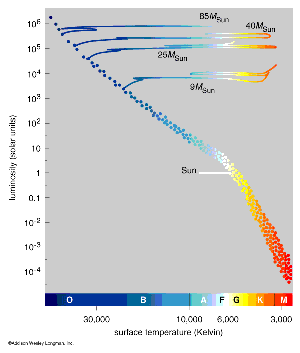
Exam 2: Stars (take home test) |
||
| Name ___________________________________ Star Name _______________________________ |
Score _______________
Date: ________________ |
|

| Star Name | Bayer Designation |
Spectral Type | Luminosity Class |
Apparent Magnitude | Absolute Magnitude |
Distance (Parsecs) |
|---|---|---|---|---|---|---|

| (2 pts)Mass: |
| (2 pts)Uncertainty: |